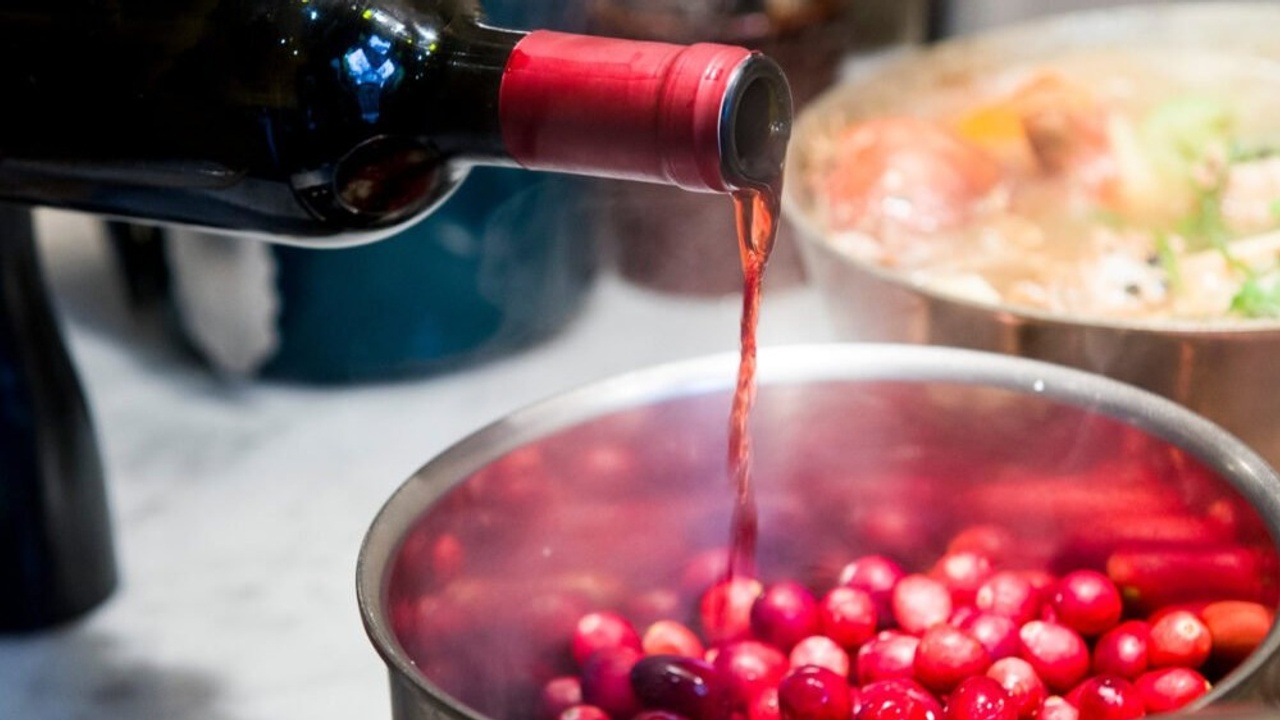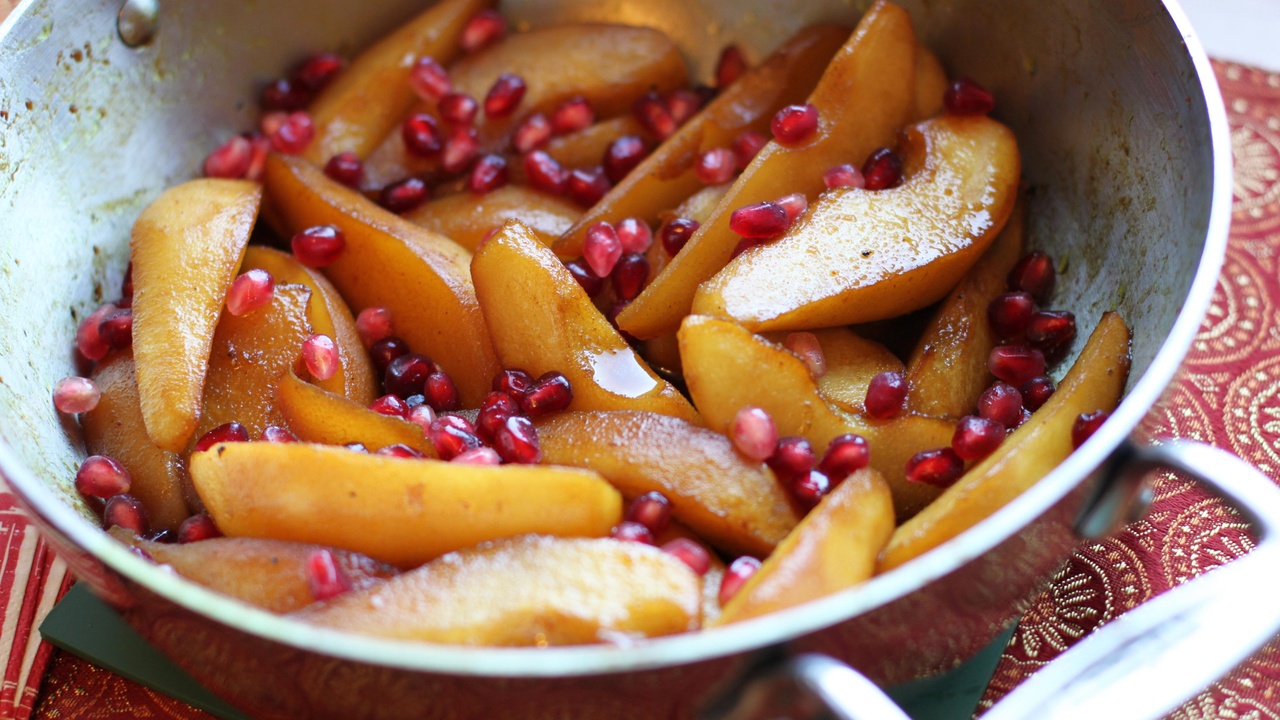Cooking with Wine the Thyroid-Healthy Way

It was Julia Child who famously said, “I enjoy cooking with wine. Sometimes, I even put it in the food.”
Cooking with wine adds not just flavor, but complexity and depth to recipes. A splash of white wine can add brightness to an otherwise lackluster sauce. When used in marinades, alcohol can help tenderize tough cuts of meat. Julia Child’s famous Boeuf Bourguignon uses nearly an entire bottle of fruity red to carry the flavor and aroma of this rich beef stew. But, for those of us eating for our thyroid and overall health, is cooking with wine yet another thing we have to say goodbye to?
In this article, we’re going to cover:
- How to decide whether wine has a place in our diet.
- What are the common sensitivities to wine?
- Which healing diets allow wine, and which don’t?
- How to cook with wine while we’re trying to avoid drinking it.
- How to choose the best cooking wine.
Full disclosure: Some of the links in this post may be affiliate links. As an Amazon Associate, I earn from qualifying purchases. Purchasing a product using one of these links will support my work at no additional cost to you. Please know that I only recommend products I wholeheartedly stand by.
Is Wine Allowed On My Diet?
To help you decide if cooking with wine is appropriate for you, here are some criteria to consider from a few of the common dietary templates used by thyroid patients:
If You’re Gluten-Free: Wine is considered gluten-free, but may contain trace amounts depending on the fining and aging techniques used. If you are highly sensitive to gluten, check with the winery directly or purchase certified gluten-free wines.
If You’re Dairy-Free: Wine is considered dairy-free but may contain trace amounts of dairy depending on the fining agents used. These agents can include proteins derived from milk. If you are highly sensitive to dairy, check with the winery directly.
If You’re Paleo: While alcohol is considered a toxin and not exactly encouraged on the Paleo Diet, many Paleo experts feel that low to moderate wine consumption is okay as part of a sustainable Paleo lifestyle.
If You’re AIP: You may be surprised to learn that alcohol can be part of a sustainable AIP diet. Note: You need to have reached Phase 2 of the Reintroduction Stage of AIP to begin experimenting with reincorporating small quantities of wine.
If You’re Keto: Even if you’re adhering to the strict Keto guideline of 20 grams of net carbs per day, you can still enjoy the occasional glass of wine. Dry wines typically have around 2 grams of carbs per serving. Avoid sweet wines and dessert wines, which are higher in sugar.
Other Dietary Sensitivities: Those who are allergic or sensitive to yeast, sulfites, or histamine should avoid wine. This also goes for allergies and sensitivities to other ingredients in wine like grapes or ethanol.
PRO TIP: Some people experience unwanted reactions to wine because of the additives and the aging processes used. Flushing, headaches, and disproportionate hangovers from even a little bit of wine are common complaints. One of the best things you can do to prevent this is to choose wine that is clean, lower in sulfites, and additive-free.
What About Wine and Thyroid Health? Do They Mix?
What we put in our mouths comes down to personal choice. I believe that the most thyroid-healthy diet is the one that’s right for you. It’s personalized to your dietary needs and sensitivities, your lifestyle, and your current health situation. My mission is to provide the information and inspiration you need to make the best, most informed choices for your health.
In that spirit, let’s just put this out there and get it over with: Alcohol is problematic. It’s problematic for anyone seeking better health, and it’s especially problematic for thyroid patients. It negatively affects our sleep, gut health, metabolism, liver function, weight loss efforts, and so much more. What’s a Thyroid Thriver to do?
Further reading: Five Reasons Alcohol is Problematic for Hypothyroidism
The Good News on Cooking with Wine
You may already know this, but cooking (as in, applying heat) evaporates most (not all) of the alcohol in recipes. How much alcohol evaporates depends on how long and how hot the food was cooked. In a recipe like Julia’s famous Boeuf Bourguignon, which is a stew cooked above the boiling point for hours, about 95% of the alcohol will evaporate.
If you, for any reason, do not consume alcohol whatsoever, the belief that all of the alcohol is cooked off is, unfortunately, a myth. In this case, cooking with wine or other types of alcohol is off-limits. In most cases, you can easily omit or make substitutions for the wine.
White Wine Substitutes: Chicken broth, lemon juice, white wine or champagne vinegar, or a combination.
Red Wine Substitutes: Beef broth, perhaps with a splash of balsamic or red wine vinegar for acidity.
The Takeaway: Cooking with wine should be fine for most of us, as long as we are not sensitive to the other ingredients and additives in the wine, and as long as it agrees with our personal needs and dietary guidelines.
What If I Want to Cook with Wine, But Not Drink It?
The temptation factor! Let’s talk about it.
Cooking with wine means purchasing and opening a bottle, which presents us with a conundrum when we’re trying to abstain from alcohol. We either end up wasting the remainder of the bottle, drinking it or trying our best not to.
Just like it’s easier to abstain from eating cookies if we don’t keep a jar of them on the counter, it’s easier to abstain from alcohol if you don’t have an open bottle of wine sitting in front of you while making dinner. I’ve failed that test a time or two! LOL
If you’re like me and enjoy cooking with wine, but are also trying to avoid the temptation to drink it, here’s my #1 tip:
Purchase one bottle each of fruity, non-oaky red (Zinfandel, Beaujolais) and white (Pinot Grigio, Sauvignon Blanc). Use a silicone mold or ice cube tray to freeze the wine in small portions. Once frozen, you can transfer those portions to a labeled zip-top freezer bag for easy storage.
Yes, because of the alcohol, the wine cubes may be a bit "slushy" but still easy enough to handle and store. When a recipe calls for wine, simply thaw as much as you need. That way, you can have wine on hand for cooking purposes, and you don’t have to purchase or open a bottle every time a recipe calls for it. That’s a win!
This method is especially helpful for those of us trying to reduce or abstain from drinking. It also enables you to select wines for your cooking purposes which are low in sugar, free of industrial additives, and as clean as possible.
Other Less-Preferred Options:
- Mini Bottles: You can purchase mini-bottles of wine which often come in a 4-pack. Keep in mind that the large-scale, industrial winemakers who often make those mini-bottles typically use more pesticides and industrial additives in their winemaking. It’s hard to tell because unfortunately, none of that has to go on the label. While you do gain the benefit of not wasting a full-size bottle, there will still either be waste, or the temptation to drink the remaining wine. Not ideal.
- Cooking Wine: Purchasing cooking wine is another tactic that enables you to store shelf-stable wine (not meant for drinking) in your pantry, alongside vinegars and oils. While bottled “Cooking Wine” may be cost-effective and convenient, the trouble is that cooking wine contains loads of salt and preservatives, and doesn’t taste all that great. The culinary rule of thumb is to never cook with wine you wouldn’t enjoy drinking. Under that logic, cooking wine is not ideal.
Thyroid-Friendly Recipes Featuring Wine:
- Classic Braised Short Ribs
- Chicken Saltimbocca
- The Ultimate Gluten-Free Gravy
- Lamb Stew with Mushrooms and Red Wine
- French Beef
In Conclusion
When it comes to cooking with wine, if it fits your personal needs, goals, and guidelines, go for it! If not, it's probably best to avoid it.
Adding a spritz of lemon juice, vinegar, or another acidic ingredient can replace white wine in most recipes. For red wine, beef broth often works as a substitute, with perhaps a splash of balsamic or red wine vinegar for acidity.
If wine is a hard NO for you, it's probably best to make something else in cases where wine is one of the primary ingredients.
As a chef and foodie, I’m grateful to have some tools and clean wine options that enable me to enjoy the occasional glass of wine and also cook with wine, without issue. This allows me a little more freedom and pleasure in the kitchen while also adhering to my health aims.
Anything that can help us continue to make our favorite recipes, using our favorite ingredients, while still supporting our health goals is a good thing in my book! I hope this exploration into wine and cooking with wine has helped make your thyroid-healthy diet and lifestyle easier, healthier, and more delicious!
Wishing you the best of health,

P.S. Need more help and support? Book a coaching call with me to discuss your current health challenges and goals.
Subscribe to my free newsletter for fresh recipes & lifestyle tips, delivered weekly, and receive a free gift!
By submitting this form, you agree to receive ongoing updates from Hypothyroid Chef










